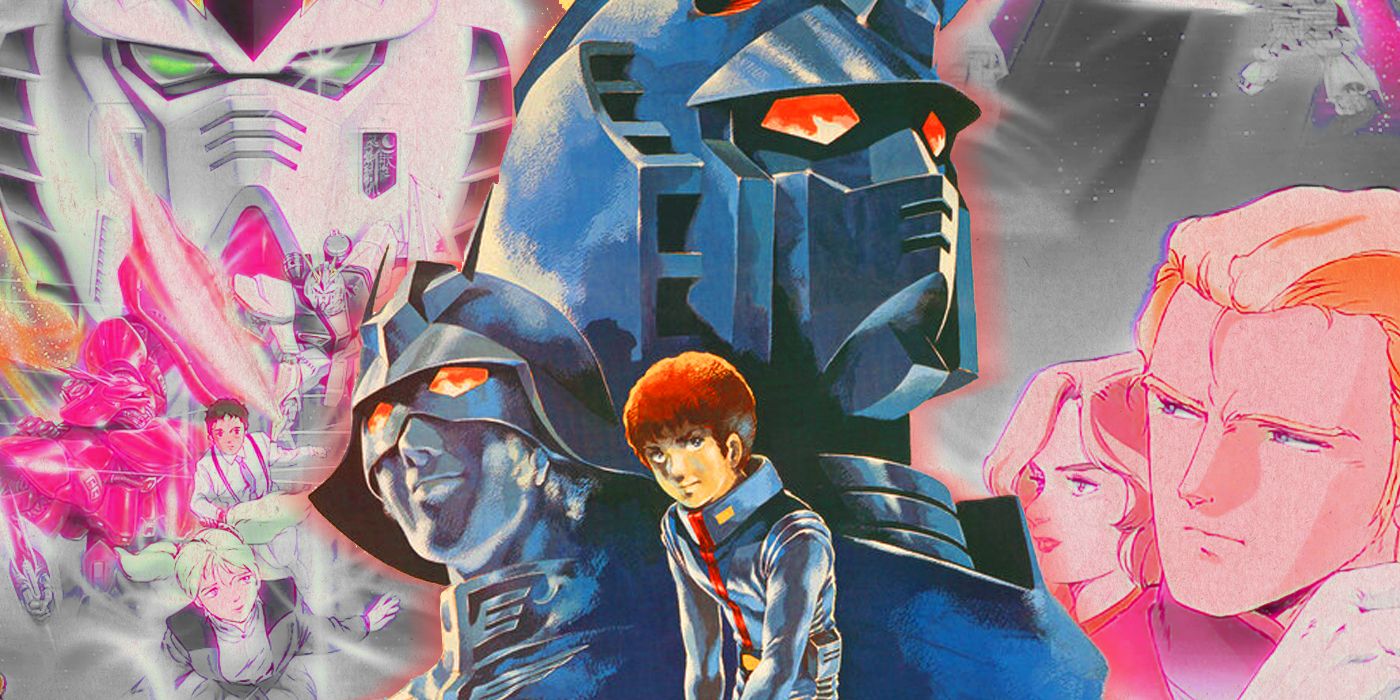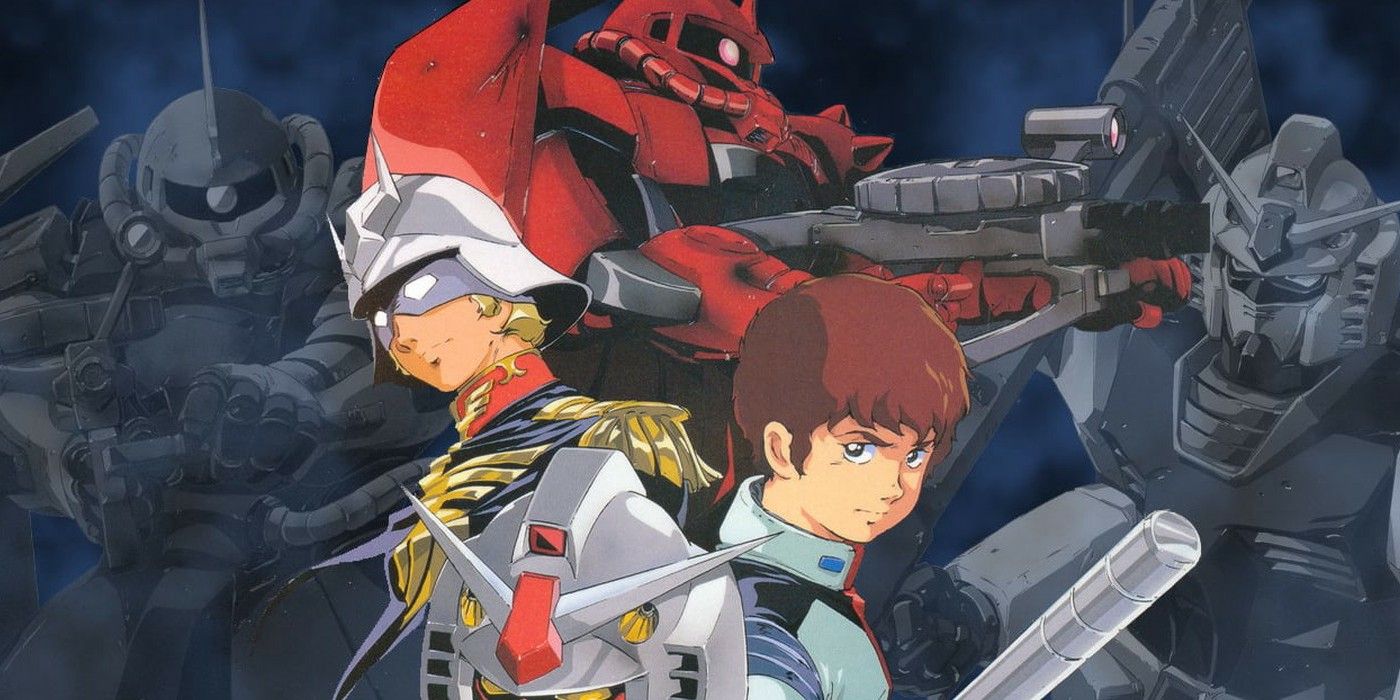WARNING: The following contains spoilers for Dune, now playing in theaters and on HBO Max, as well as for Mobile Suit Gundam, whose original movie trilogy is available on Netflix.
The release of Dune (2021) has reinvigorated interest in the legendary science-fiction series. Frank Herbert's 1965 novel and its multiple sequels permanently changed the landscape of the genre, setting a new standard for worldbuilding and political parable. Its influences can be seen across popular culture -- from Star Wars and Star Trek to fantasy franchises like The Wheel of Time and Game of Thrones, traces of Dune are omnipresent.
These traces range from the surface level to the more substantial, but one of Dune's most direct successors undoubtedly has to be Mobile Suit Gundam. In its native Japan, the influence of Gundam on science fiction rivals Dune's in the West -- Gundam gave birth to the "real robot" genre. Which trades the fantastic spectacle of its "super robot" predecessors for a darker, more grounded perspective on future warfare and the role these colossal humanoid machines would play in them.
RELATED: Gundam Exhibition Debuts New Art, Exclusive Gunpla Models
Like Dune, Gundam would see many sequels over the years, several of which bear many similarities to Herbert's work. Whether it's the desert-based warfare of Iron-Blooded Orphans or the dynastic conflict of Gundam: The Origin, which reframes the original series' Deikun and Zabi families as parallels to Dune's Atreides and Harkonnen Houses, multiple Gundam series pay lip service to Dune.
These homages go back to the beginning, with the Gundam that started it all, 1979's Mobile Suit Gundam. The series begins with the Earth Federation at war with the Principality of Zeon, a former Federation colony gone rogue courtesy of its leaders, the fascistic Zabi family. Both sides of the conflict begin producing mobile suits, pilotable robots with immense capacity for destruction. When Zeon forces attack the Federation colony Side 7, young civilian Amuro Ray finds himself forced to pilot his military engineer father's most powerful invention, the titular mobile suit Gundam. From there, the series follows the Federation battleship White Base, manned almost entirely by Side 7 civilians and refugees, as both it and Amuro in the Gundam defend against Zeon forces.
Despite coming out just two years after Star Wars, and the Gundam's signature beam saber bearing more than a passing resemblance to a lightsaber, the conflicts of Gundam owe more to Dune than they do to Star Wars. Subterfuge and stratagems are the names of the game, with both series resisting spectacle or glamourization of war. Amuro and Dune protagonist Paul Atreides are both young, and neither series shies away from depicting the psychological impact such bloodshed would have on these vulnerable, impressionable minds.
The more realistic takes on war Dune and Gundam depict are in large part thanks to their creators' historical interests. Herbert and Gundam progenitor Yoshiyuki Tomino both pull from real-world conflicts in their works. Dune pulling mostly from the history of European colonialism in the Middle East, while the original Mobile Suit Gundam is largely a retelling of World War II in space. Later Tomino-penned Gundams would pull from the likes of the Troubles in Ireland, the Vietnam War, Israel vs Palestine, and the Angolan Civil War.
As a result, Dune and Gundam resist easy moral categorization. Whilst their respective antagonists House Harkonnen and the Zabi Family are unabashedly evil, neither series loses much love for their nominally heroic factions either. House Atreides, despite its noble intentions, is still complicit in the barbaric colonialism of the Imperium. The Earth Federation, meanwhile, is staffed almost entirely by out-of-touch bureaucrats with no consideration for spacenoid (those who were born and raised in space) citizens, to the extent that Tomino would go on to make them the villains of the first Gundam sequel, Mobile Suit Zeta Gundam.
RELATED: Gundam Creator Says Space Colonization Is Bad for the Earth
Other than the giant robots, Gundam is most famous for the concept of "Newtypes" -- spacenoids who have developed heightened mental abilities from the duress of living in space. This immediately calls to mind Dune's Mentats, humans trained in specialized cognitive thinking exceeding that of a computer. Both Mentats and Newtypes represent the enlightenment of their respective future civilizations, but also the ways that humanity can twist said enlightenment for nefarious purposes. Mentats and Newtypes become tools of war, and whilst Amuro and Paul's prodigious abilities in these fields represent the possibility of change from the issues inherent to the Imperium and the Federation, they also risk repeating those issues down the line. The message of Dune and Gundam is clear; whilst future technology and new ways of thinking can improve human lives unless our species takes a long hard look at itself it will also use them to perpetuate the same problems for the rest of its days.
For Dune fans old and new, Gundam makes for an easy recommendation. If you're eager for more of Herbert's decades-long epic of humanity's worst excesses following it to the stars, then Tomino's decades-long epic of humanity's worst excesses following it to the stars is a worthy substitute. One may have giant robots and the other giant worms, but the two have more in common than not and need to be experienced by any sci-fi fan hungry for more nuance and moral ambiguity in their stories.
KEEP READING: Why Isn't Gundam More Popular?



